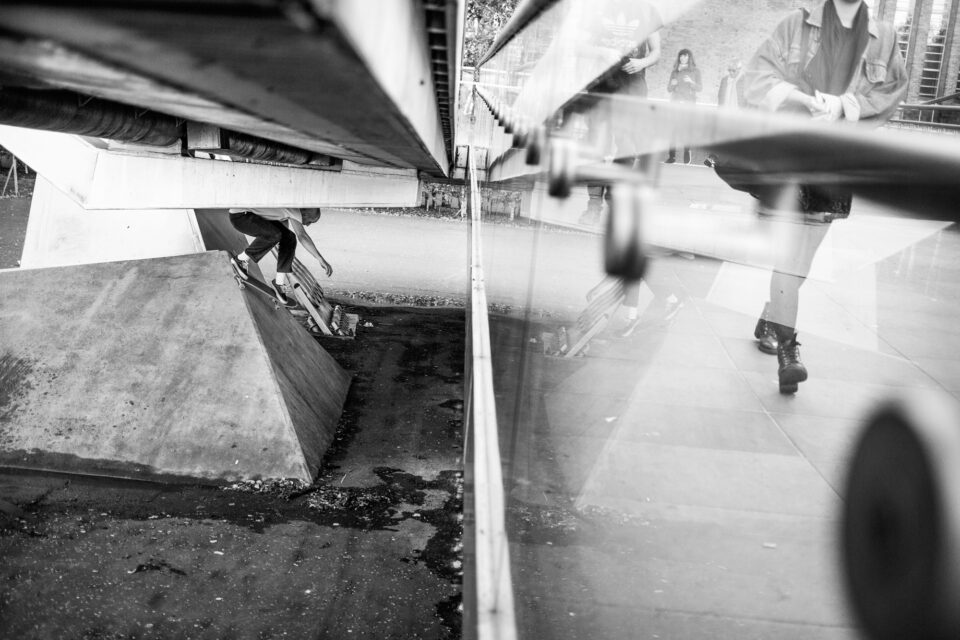Previous post
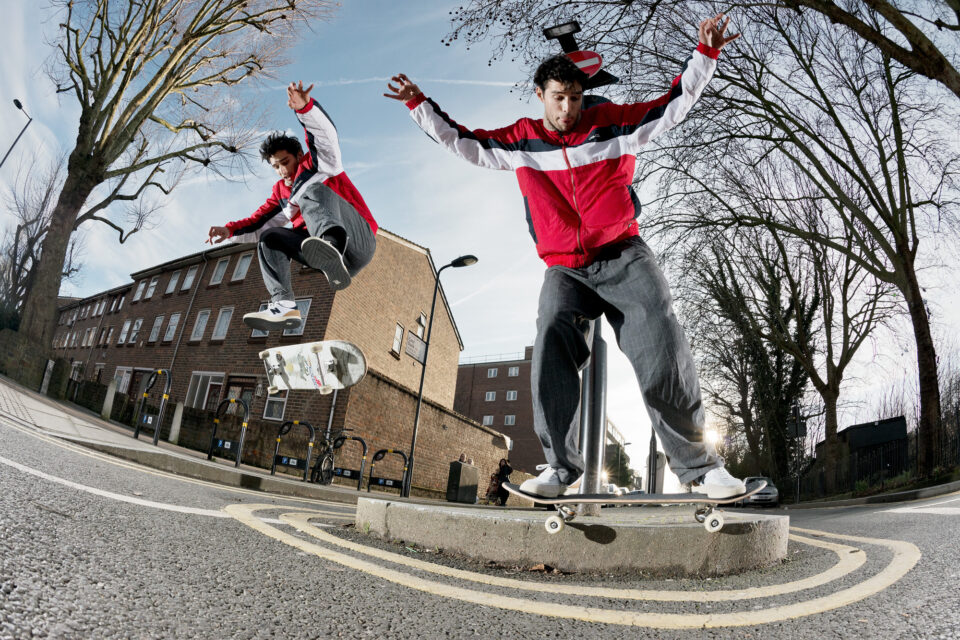
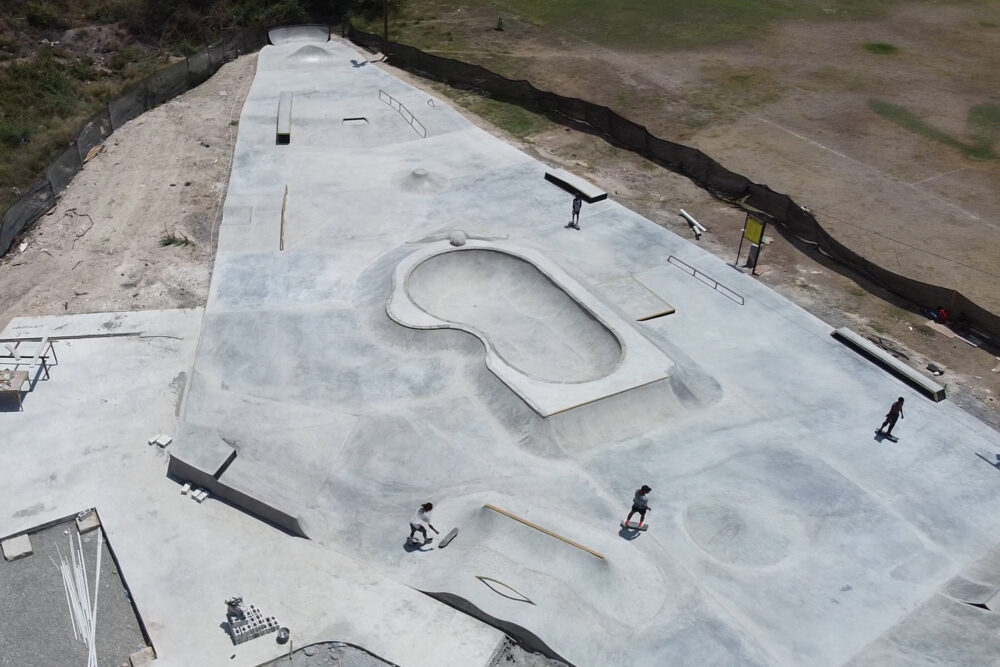
After 14 months of planning and fundraising, The Concrete Jungle Foundation (CJF) was all set to start work on its most ambitious project yet – Freedom Skatepark (Kingston, Jamaica’s first skatepark) – when Covid-19 hit. We caught up with Troy Björkman (CJF development director) for a chat about the Foundation and its work, what they look for in volunteers, how they managed to build a park under lockdown and how Covid-19 might affect the work of the charity skatepark sector in the future.
Interview: Kingsford
Photography: Stoefen (unless otherwise stated)
Tell us a little bit about your background and how you came to be involved in the charity skatepark sector.
The four of us running CJF internationally are all skaters from different European countries with complementary backgrounds and skillsets. I’m a student of international development and e-business from Helsinki, Finland. I got in touch with CJF in 2017 while writing an extended research paper on skateboarding charity organisations from a business perspective. Upon graduation in January 2018 I flew down to Peru to volunteer with the crew and ultimately started working with CJF longer-term.
Harry (Gerrard) is a skatepark builder from Kent, UK. He was involved in numerous charity skatepark builds like Myanmar, Jordan, Palestine and Ethiopia to name a few, before CJF came into existence, and currently makes a living building skateparks professionally in Europe.
Clément (Taquet) is a designer from Belgium. He was working and living in Peru in 2017 where he met Harry and ended up co-founding CJF. Our first skatepark was built in the north of Peru in the city of Trujillo that same year.
Tim (van Asdonck) is a skateboarding teacher and youth development specialist from Utrecht, Netherlands. He had focused much of his graduate studies on looking at how skateboarding can stimulate personal development for underprivileged youth, so he joined CJF to develop the Edu-Skate Programme once the skatepark in Peru was completed.
Tell us more about CJF.
CJF is an organisation and network of skaters that do two main things: build free-of-charge concrete skateparks for underprivileged communities around the world and provide skateboarding-based programming for children and youth at these project locations. At the core of our work is the belief that skateboarding can serve as an effective tool for personal and community development, if done right. And that is the main mission of CJF: to plant the positive seeds of skateboarding. Sustainability of the parks, programme and skate community is very much our focus, so we fundraise not only to build parks but also to employ local skaters, run the youth programmes and organise events and contests at the parks. We do also rely on international volunteers both for our builds and helping out with running the youth programme at our project locations.
How do you choose a location for a new project?
Usually we have a few main criteria for starting a new project: there has to be a local skate or social organisation that is willing to partner with us for the project, the local stakeholders should be able to secure the land independently and the proposed location must be in a socio-economically marginalised area.
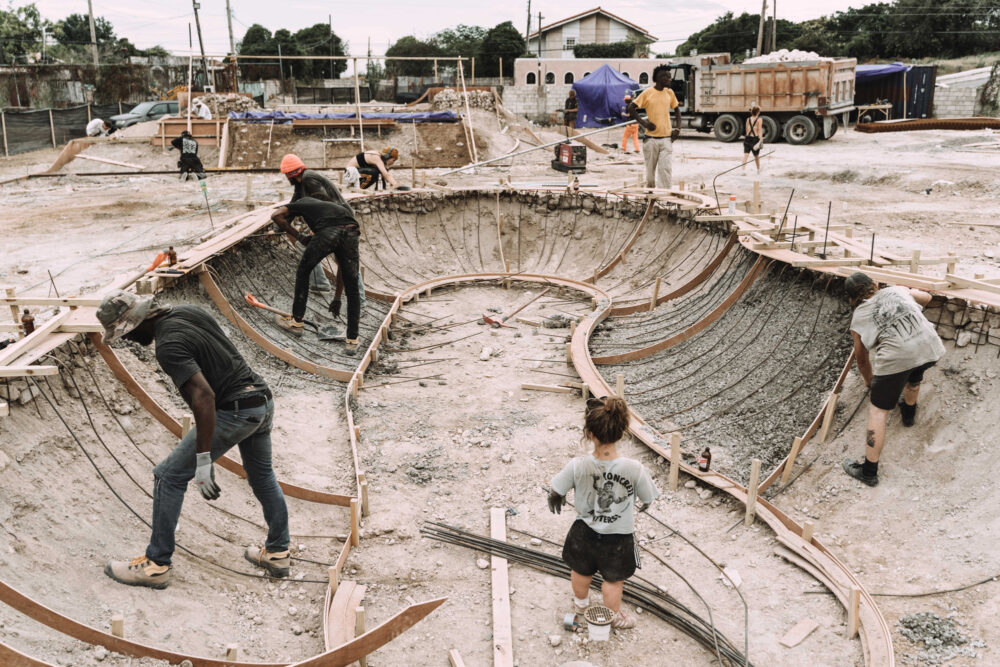
How did the Freedom Skatepark project come about?
During our last build in Angola in December 2018 we were contacted by William Wilson, a British guy who had befriended the Jamaican skate community and was looking for a way to help get a park built for them. He had just started an organisation himself called Flipping Youth. They already had some potential local sponsors lined up and were looking for an organisation that could carry out the work and match the rest of the necessary funding. We started working together in early 2019 to see the project realised.
How did the funding process go for this park?
When we started working on the project, we committed to securing funding to match a 60,000 USD donation from two Caribbean companies (Seprod Foundation and Sandals Foundation). Over 14 months CJF and our supporters all over the world fundraised through hosting events, selling merchandise, and collecting individual and corporate donations. Big up to the Dutch CJF family, Radio Zaatari in London, Lisa Jacob in Paris, and especially The Skateroom in Belgium – this project wouldn’t have happened without your continued support!
How do you choose volunteers? Are there people who join you for every build?
Things have changed a bit over the years. During the first builds everyone that wanted could basically come. Nowadays a maximum number is set, and the crew is chosen based on two main criteria: skatepark construction / DIY experience and their participation in helping us fundraise to make the project happen. Of course, word of mouth also plays a role.
We’ve built three parks so far: in Peru, Angola and now Jamaica. The only people that have been at all three builds are Clément and Harry from CJF, but there are some people that have been at two.
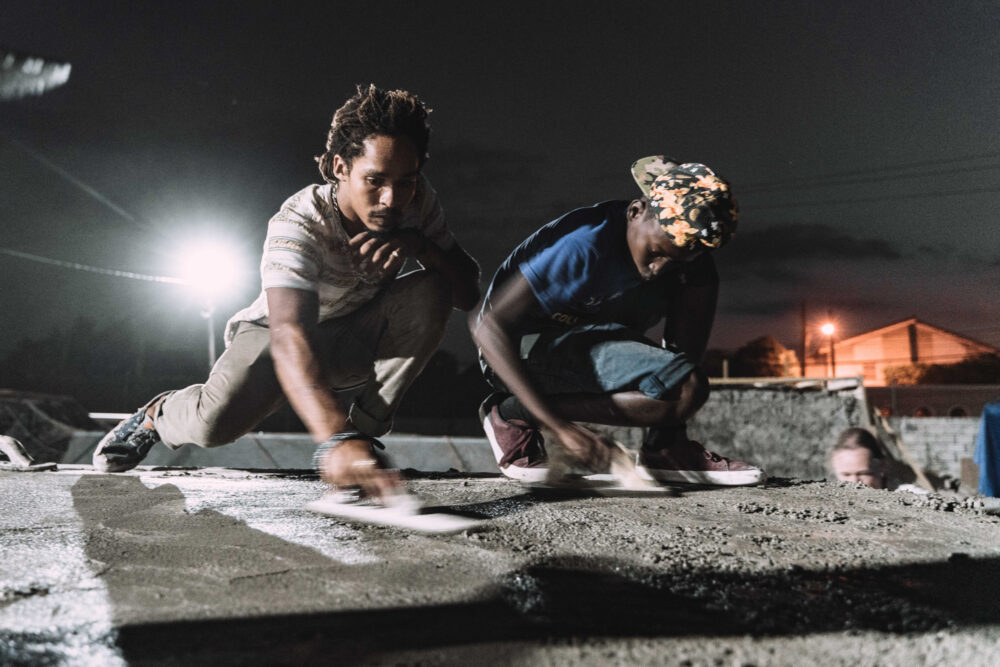
For those interested in volunteering, what skill level is required?
There’s always a broad range of different construction skill levels on-site. Naturally we mainly look for people that have substantial experience in DIY or formal skatepark construction. But on the other side, we’ve had plenty of volunteers that have never worked with concrete before but have helped substantially during the preparatory stages of a project as well as during the build. What can you offer? If it’s not construction perhaps you can help the project in another way: organising fundraisers, hosting a contest, coming on as a photographer / videographer etc. It’s all about the passion, dedication and value the person brings to seeing the project realised. Get in touch and help out.
What are you doing to encourage diversity in volunteers and also end users of the parks?
While the skateparks we build are free of charge community spaces open for everyone it is often the case that children and youth from more privileged backgrounds have it easier to make use of them. This can be due to having access to transportation or having more leisure time, for example. We counteract this by providing our Edu-Skate Programme (including transportation) only to children who are from socio-economically marginalised backgrounds.
Whether or not to grant priority to volunteers for being part of a minority group is something we’ve discussed quite a bit internally with CJF, but we haven’t yet reached an organisational policy as such. We do try to get women involved as much as possible in order to support female skateboarding and skatepark building competence. For this project, for example, we had three women on board who had never built skate obstacles before. But at least so far these decisions haven’t been made with a particular quota or anything like that.
How do you involve local people in the building process?
We always involve the local skate community in the building process as we think it’s a great way to transfer skills to them. At the previous project that happened naturally (as we were working with and living at a skater’s house). For Jamaica we actually took this to the next level by implementing a paid apprenticeship programme for the local skaters. This meant that throughout the build we had six local skaters that were getting paid while shadowing our professional builders and learning all the stages of skatepark construction.
Do these people leave the build with enough skills to build new parks?
I would say that the beneficiaries of the apprenticeship programme leave with solid introductory knowledge and experience of every step involved in the process, and they can definitely build proper DIY obstacles. That being said, learning how to build professional skateparks takes a lot of practice and experience. We can show them the way, but they need to dedicate more time and practice to master the art.
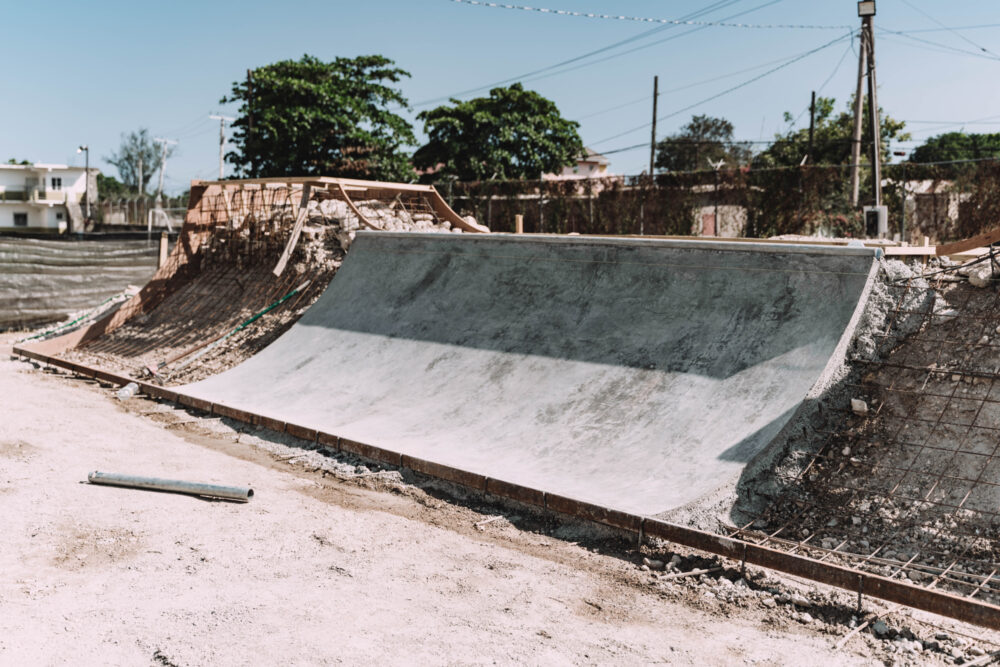
What safeguards are put in place to ensure the safety of volunteers during the project?
Firstly, we always require all our volunteers to have travel insurance to join a project. For the current project in Jamaica we also had insurance that covered everyone working on the construction site. In addition, we always set some ground rules depending on the country and culture we’re working in. Things like never go into the city alone after dark, no flashing valuables, etc.
How was it working with local authorities in Jamaica? Do you work with local people to guide you through planning procedures etc?
Social and work culture varies significantly between countries and continents, so we always work with local people we trust along the way. But that doesn’t always solve the issues though. For instance, Jamaica tends to move kind of slow in terms of authorities and formal applications. While the original plan was to receive our lease and building permit back in June 2019, our local partners (Seprod Foundation, Sandals Foundation and Tmrw. Tday) could only secure it while we were on the ground in February 2020. That was a big scare. We had all these people coming, project announced, but no certainty we would actually get to build.
What does a skatepark bring to a community beyond the obvious (a place for people who already skate to go)?
Research has established that skateparks and skateboarding promotes a wide range of positive life-skills such as confidence, goal setting, perseverance and social relatedness – especially for marginalised youth. Skateboarding is also inherently non-competitive and actually one of the most inclusive ‘sports’ in the world, which in turn also promotes equality, a focus on self-improvement as well as sound gender relations. And such influences can be very important, especially in places where youth criminality is high and liberal progressive ideals are not necessarily the norm.
Beyond the normative, a well-organised skatepark also attracts youth engagement, ownership and agency in the community, serving as a platform where young people can have a say and actively influence the development of something that is important to them. And as the first of its kind in the country, a skatepark can have a notable commercial and cultural value over the long-term. While a free-of-charge community skatepark, The Freedom Skatepark will no doubt be the hub of skateboarding in Jamaica for the foreseeable future, serving as the site for competitions, events, skate schools and all other cultural-commercial activities that typically surround skateboarding elsewhere.
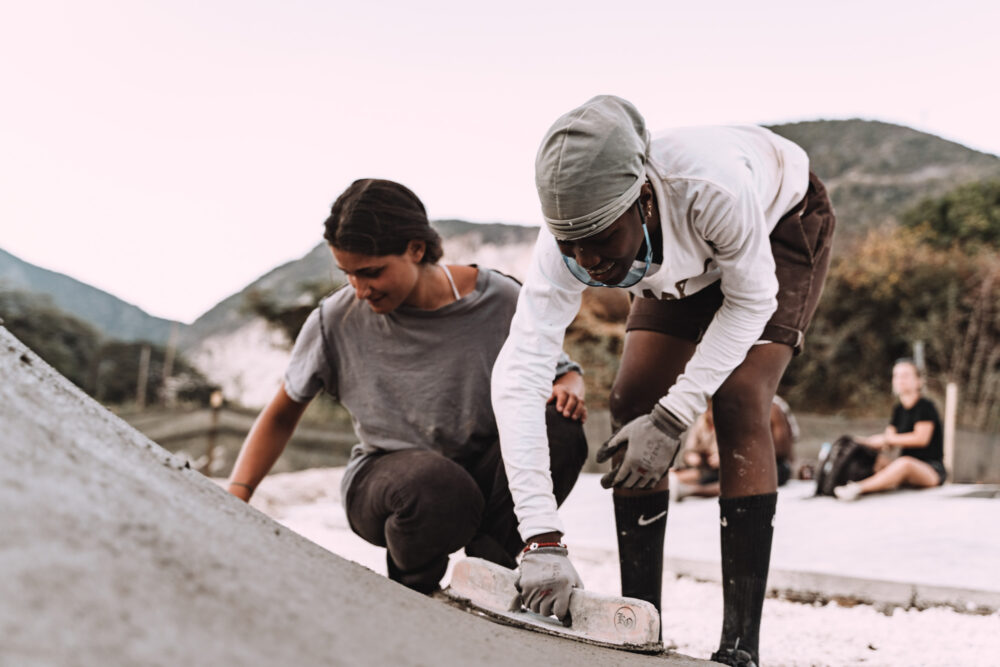
You touched on this earlier. Can you talk more about what happens after you leave? How does the Foundation ensure the parks are maintained, equipment is available and supervision and support is offered?
The completion of the skatepark is only the beginning of CJF’s work in Jamaica. Once the Covid-19 situation calms down and we can formally open the park, we will begin implementation of our Edu-Skate Programme, which involves teaching life-skills and skateboarding to 7-12-year olds as an after school programme. We are also in the process of employing local skaters to work as skatepark managers, Edu-Skate teachers, and multimedia managers at the park, so the skatepark will be taken care of properly for sure! For equipment, we’re working with a number of partners to have boards and safety gear available at the park as part of a loaning programme. Shout out to Donate for Skate, Skateboards for Hope, The Skateroom and Paris Skate Culture.
As you can see CJF doesn’t leave once our parks are completed. Instead, our approach is focused on sustainability to ensure functionality and a thriving skateboarding community over a longer period of time. In the long-term, our plan is always to give complete local ownership of the project and park over a period of 3-5 years, which then allows us to take on new projects.
The finished park looks great. Congratulations. Can you talk us through the design process? How were local skaters involved in this process?
Thanks! This definitely turned out to be our most ambitious project in terms of size and design. The park came out super flowy and way over the planned 1000m², so we are all beyond stoked. In fact, I just heard from our operations director Harry the true final size is roughly 1300m²!
In terms of process, Harry typically makes the first draft of the park design based on available resources, and then consults with the local skaters about their preferences. The preliminary design is then 3D rendered by our friends at New Line Skateparks from Canada, who have been helping us out since 2017. Thanks for your continued support guys.
But while we have a preliminary design when all volunteers arrive on-site, the final product always has modifications. The turtle in front of the bowl at the Freedom Skatepark for example. That wasn’t planned at all – Fia (Lund) and Bea (Palotie) from Finland just drew it up and asked: “Hey, how about something like this?”, and everyone was stoked on the idea. John (Seaman), Ben (Daeleman), and Sam (Van Lani) really put in the work to give life to the turtle in the end, much respect. So yeah, the process is definitely much more fluid and free than at a formal build.
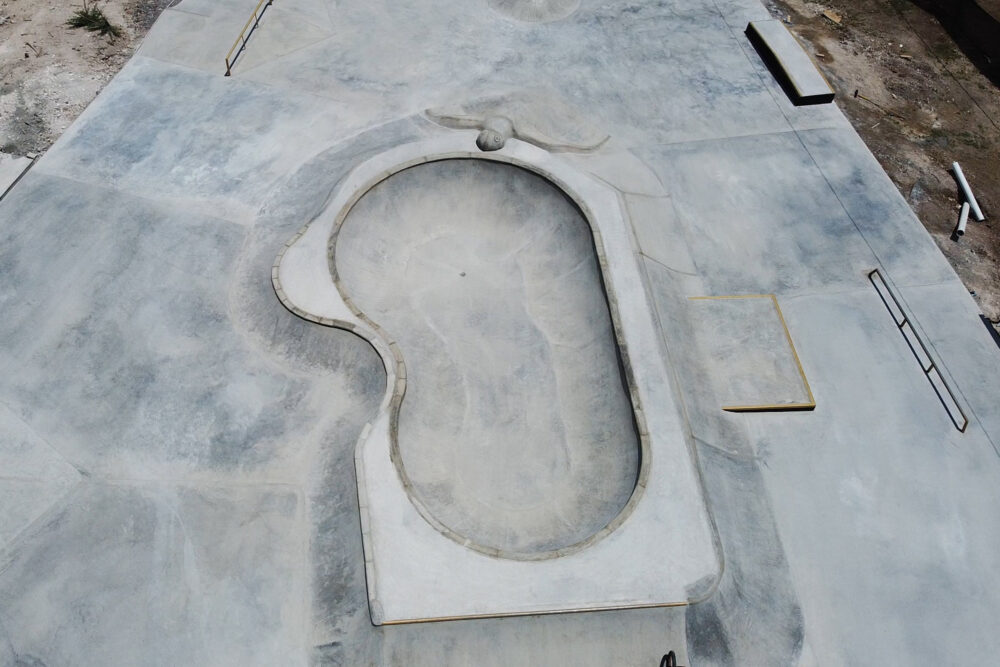
Where were Kingston’s skaters skating before now? I saw a fun-looking DIY spot in Eli Reed’s Out There episode.
The Gully DIY! SK876 is the crew behind that spot. It’s sick. It was the only park-like spot with any street features on the whole island before we came down. Shout out to Ivah, Shama, Jeff and everyone else who have been building there the past few years.
Before we talk about Covid-19, I wanted to ask how the recent drought in Jamaica affected the project?
There’s been a severe drought throughout Jamaica for well over a year already, but thankfully we got away mostly unscathed. In the end of February we went a week without water at the camp, but luckily the place has a big backup tank, so we were privileged to have bucket showers for those days. For the actual build we got lucky too, as the football club next to the construction site had access to an emergency tap that always flows. Farmers around the country have had it tough though, and it’s definitely had an impact on the country’s economy.
OK, on to Covid-19, which became a global pandemic during the build. How did this affect the project?
The whole corona thing hit us like a brick in the face. The flight restrictions started in early March, just when the volunteers were coming, so we had a handful of people who couldn’t make it to Jamaica at all. As the pandemic spread people were also prompted to get home as soon as possible, so we lost over 10 international volunteers earlier than planned. All of this meant that we were fewer people on-site, which of course took its toll on the planned schedule and progress. Super thankful that the flight cancellations didn’t start two weeks earlier though – otherwise the project wouldn’t have happened at all.
The second thing that happened was that Eight Mile Bull Bay, the area in which the park was being built and we are living, ended up being ground zero for COVID-19 in Jamaica, so the whole neighbourhood was put on lockdown overnight. There were military police patrolling and guarding the neighbourhood for two weeks, and no one was supposed to go in or out. It was a tense 14 days of lockdown for sure, all the while we were working full days with not enough people to finish the park.
The rule on construction work in the quarantined neighborhood was unclear for everyone, so we gambled on it and just continued to work. The team was only going to be there for those few weeks, so we had to get it done. We were lucky enough to not get pinched by the police. To be honest I think the local police looked through their fingers because they knew what the situation was, and they knew we were all working in a voluntary capacity.
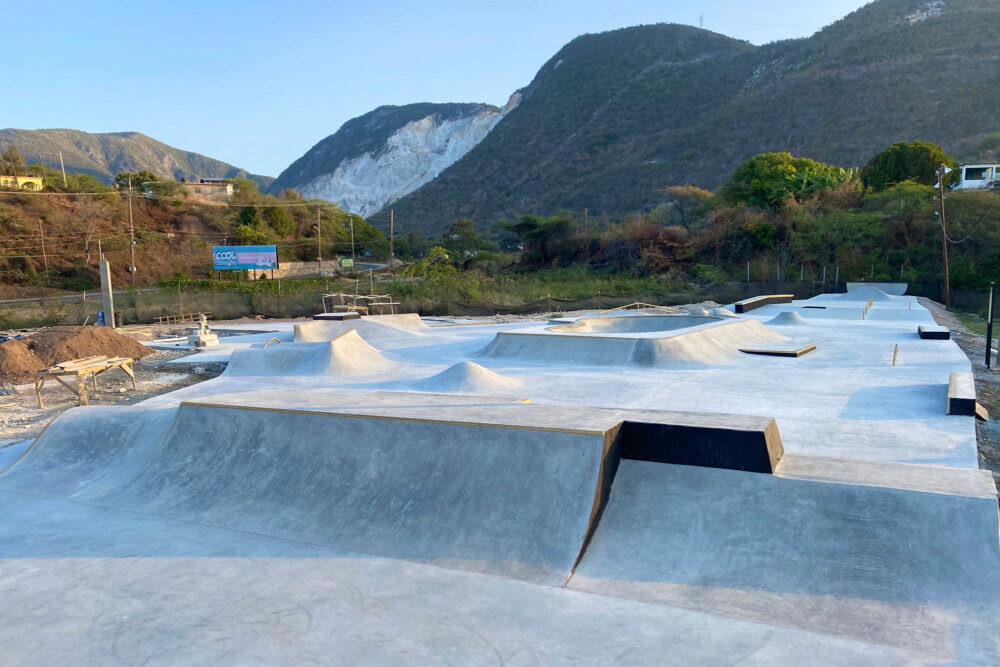
What is the current situation there?
Covid-19 is no longer only in our neighbourhood, so the area-specific lockdown has been lifted. Right now, there’s a curfew between 6pm and 6am throughout the whole country, and gatherings with over 10 people are banned. Pretty much all flights are also cancelled. All volunteers were supposed to fly home by April 6, but there are still four of them stuck on the island, plus the CJF crew.
So right now the park is finished, but not yet open to the public?
Right. The park is done, but we haven’t been allowed to formally open it to the public due to the gathering restrictions.
Are people skating it at all?
A brand new park with a maximum of 10 people at the park at any time? You bet! All the locals that have been involved in the construction plus the few international volunteers still here are free to skate it until 6pm every day.
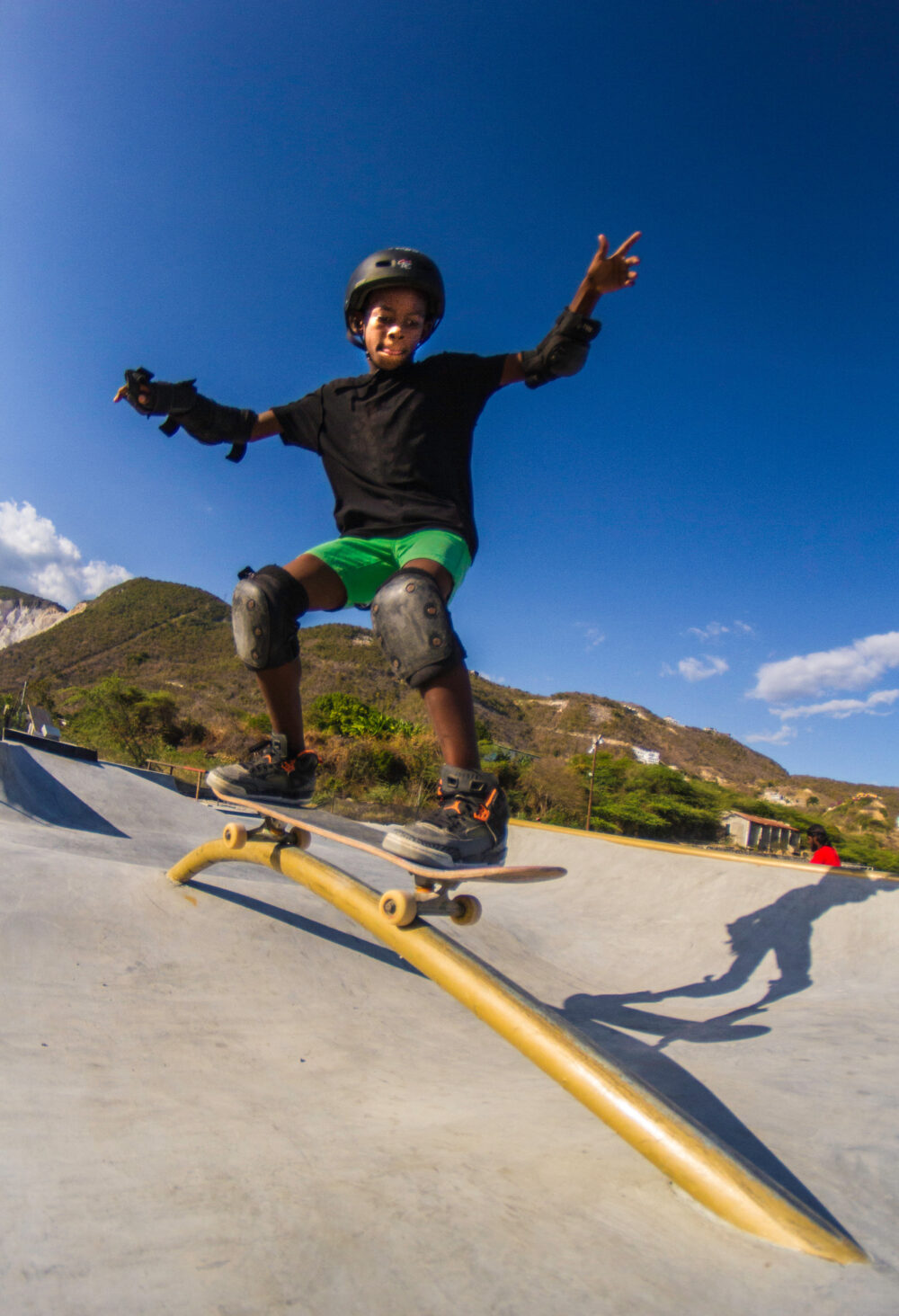
You mentioned in an email that work on the youth centre next to the park is on hold. Do you have any idea when that may resume?
The youth centre is being built by Flipping Youth, one of our partner organisations for the project. They outsourced the work to a local construction company, which then paused the work due to Covid-19. It’s still unclear when they will resume working, but I would guess they’ll be done within a month or two. I’m sure they’ll be done before the formal opening at least.
Can you tell us more about the volunteers stuck in Jamaica?
We’ve been in touch with the embassies of all our volunteers since the flight restrictions started back in March. Just a few days ago we finally got four volunteers home who were trying to get out for weeks. There is still one Canadian, one Italian, one German and one French volunteer here whose tickets got cancelled but they seem pretty happy to be stuck here to be honest.
How are the remaining volunteers getting by and where are they staying?
They’re doing fine although their planned expenses have certainly grown. Now that the park is done a number of our volunteers have struck a deal with Jamnesia Surf Camp (where we stayed during the build) to help with renovations and building in exchange for food and accommodation. Others are looking at getting an apartment.
How is CJF supporting them?
We supported all international volunteers for an extra week with food and accommodation following the completion of the skatepark, but at this stage we’re out of budget. We do everything we can to facilitate a comfortable stay for them and help out where we can with getting flights out, and we’ve been communicating with their embassies since the pandemic started.
How about yourself and your CJF colleagues? What is your situation? Will you stay there to see the project through?
We’re doing well! The CJF crew will stay here until at least June, if not longer. We still need to implement the youth programme with our local partners, and that hasn’t been possible as of yet due to the Covid-19 situation. That’s really the main part of our work, so we will stay as long as necessary to make sure we set up a solid structure here in Jamaica.
How do you see Covid-19 affecting the charity park building sector longer term?
I’m no expert, but I’d imagine that the predicted global economic recession that follows this pandemic will have a negative impact on fundraising opportunities for all charities. All those that enable this kind of work – be they governments, companies or individuals – are currently being financially strained, so this will undoubtedly affect their ability to support the work of non-profit organisations. Travel restrictions are another aspect that certainly has affected us already, but we hope those will be lifted soon so that we can resume our youth programmes at our project locations – and do more projects soon.

